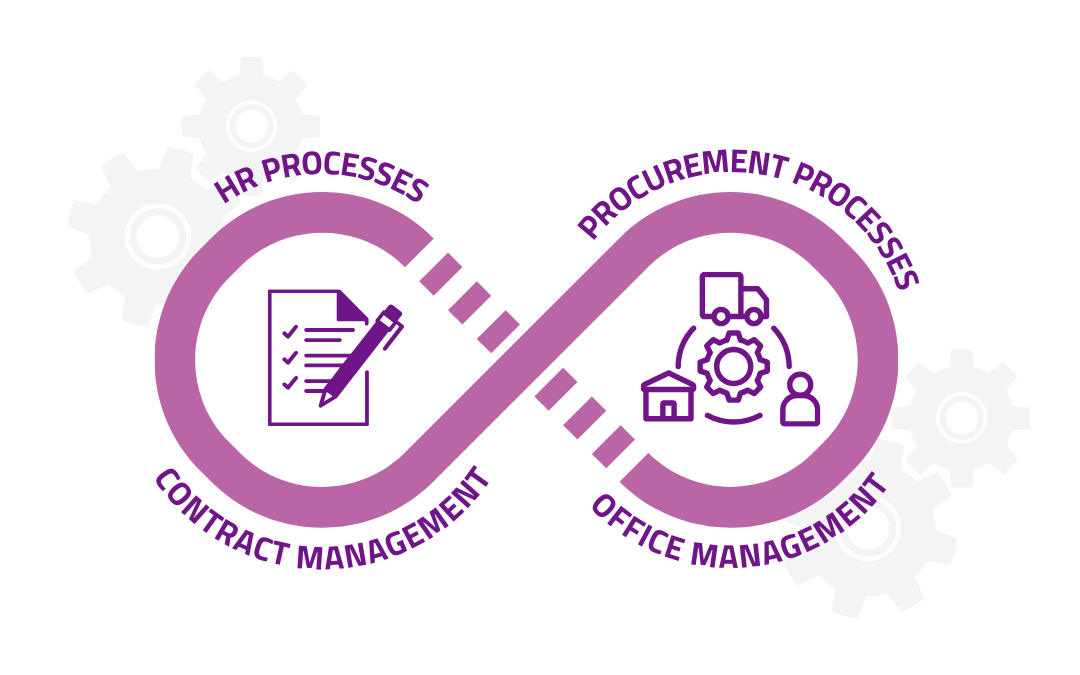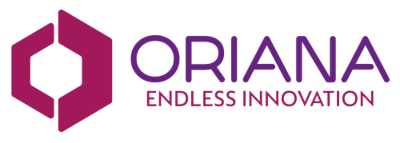In this article, we delve into back-office automation and list the processes that can easily be digitalized and streamlined by any company, regardless of size and industry, thanks to easily accessible, innovative software tools.
Back-office processes keep the company running. From data entry to document management, these processes are the backbone of operational efficiency, which begs the question: why are we still doing them manually?
Today, when we have a plethora of software tools at our fingertips that can transform how we navigate these core functions, there is no reason not to take advantage of the power of automation.
Streamlining core operations through back-office automation — where to start
1. Office management task automation
Project management
Automating project management tasks enables real-time collaboration, allowing teams to focus on creative problem-solving rather than getting dragged down by manual admin tasks.
Kanban-style task management
Kanban-style task management speeds up the movement of tasks across stages and optimizes workflows, enabling teams to respond quickly to changing priorities while maintaining a smooth, visual representation of their work.
Asset management
Automating the asset management process helps you stay on top of asset tracking, maintenance schedules, and reporting, which reduces downtime, and prevents losses due to misplaced or underutilized assets.
Inventory management
Introducing automation into your inventory management means that you can optimize stock levels, reorder processes, and get real-time visibility into your inventory status. As a result, you’ll be able to reduce excess costs and enhance efficiency.
2. HR process automation
Employee onboarding
Automating onboarding enables your team to establish a standardized process, expedite paperwork, and enhance new hires’ integration, ultimately improving employee happiness and productivity.
Performance management
Automation in performance management allows for the timely collection of performance metrics, facilitates objective evaluations, and streamlines the process of giving and receiving feedback, fostering a culture of continuous improvement and encouraging employee development.
Request management
When you automate request management processes, you consequently improve response times for tasks like holiday and day-off requests, enhancing efficiency and providing a more responsive and pleasant experience for both employees and customers.
Training and certification management
Automating training and certification management allows you to track employee skills and training assignments, and manage certification renewals on time, helping you to optimize workforce competency and minimize administrative burdens.
3. Contract management automation
Document management
Automating document management tasks has countless benefits: you can enhance collaboration, improve efficiency, reduce errors, and achieve more organized, secure, and accessible documentation processes.
Approval workflows
Digitalizing approval workflows will lead to accelerated decision-making processes, fewer bottlenecks, and provide a transparent audit trail, fostering increased accountability and efficiency in decision-making.
Digital archival
Digital archival processes ensure the systematic storage, retrieval, and preservation of records for many years, minimizing the risk of data loss, ensuring compliance, and simplifying information management.
Digital signature
Electronic signatures are a secure way to accelerate the approval processes and provide a legally recognized method for signing official documents, facilitating a more streamlined approach to document verification and authorization.
4. Procurement process automation
Requisition management
By automating requisition management, you can expedite the process and reduce manual errors, leading to quicker procurement cycles and improved transparency in resource allocation.
Contract management
Digitalized procurement contract management leads to better contract lifecycle visibility and more secure processes, ensuring that organizations adhere to contractual obligations while minimizing legal and financial expenditures.
Purchase order management
Purchase order management is another procurement function that can be easily automated. Digitalized processes ensure accuracy in order creation, leading to improved efficiency, reduced errors, and better cost control.
Invoice management
Automating the management of invoices is a huge step towards streamlining procurement workflows, reducing processing time, ensuring timely payments, improving cash flow management, and fostering stronger vendor relationships.

The power of low-code: a smart, strategic choice for every business
As your business evolves, so do your needs. With the ability to customize workflows to match your unique needs, low-code solutions are a great option to introduce a tailored approach to back-office automation.
As your company grows, the scalability of low-code solutions ensures seamless expansion, making it the intelligent choice for future-proofing scaling organizations and large-size enterprises with increasingly complex needs.
Learn more about how Oriana’s low-code solution and workflow management tool can transform your back-office processes.
Future-proof your organization with back-office automation
Key back-office processes, from project and inventory management to HR and procurement functions, are integral for enhancing organizational efficiency. Neglecting or manually performing these functions is a luxury companies can no longer afford.
By adopting software solutions for critical yet time-consuming tasks such as employee onboarding, contract management, and invoice processing, companies not only streamline workflows and reduce human error but also free up teams to concentrate on productive tasks and strategic decision-making. Implementing automation tools in 2024 is no longer an option but a necessity for surviving in the modern business landscape.
Would you like to learn more about how to prepare your business for the coming years? Download our latest eBook, Future-proof your business with low-code software solutions in 2024.



